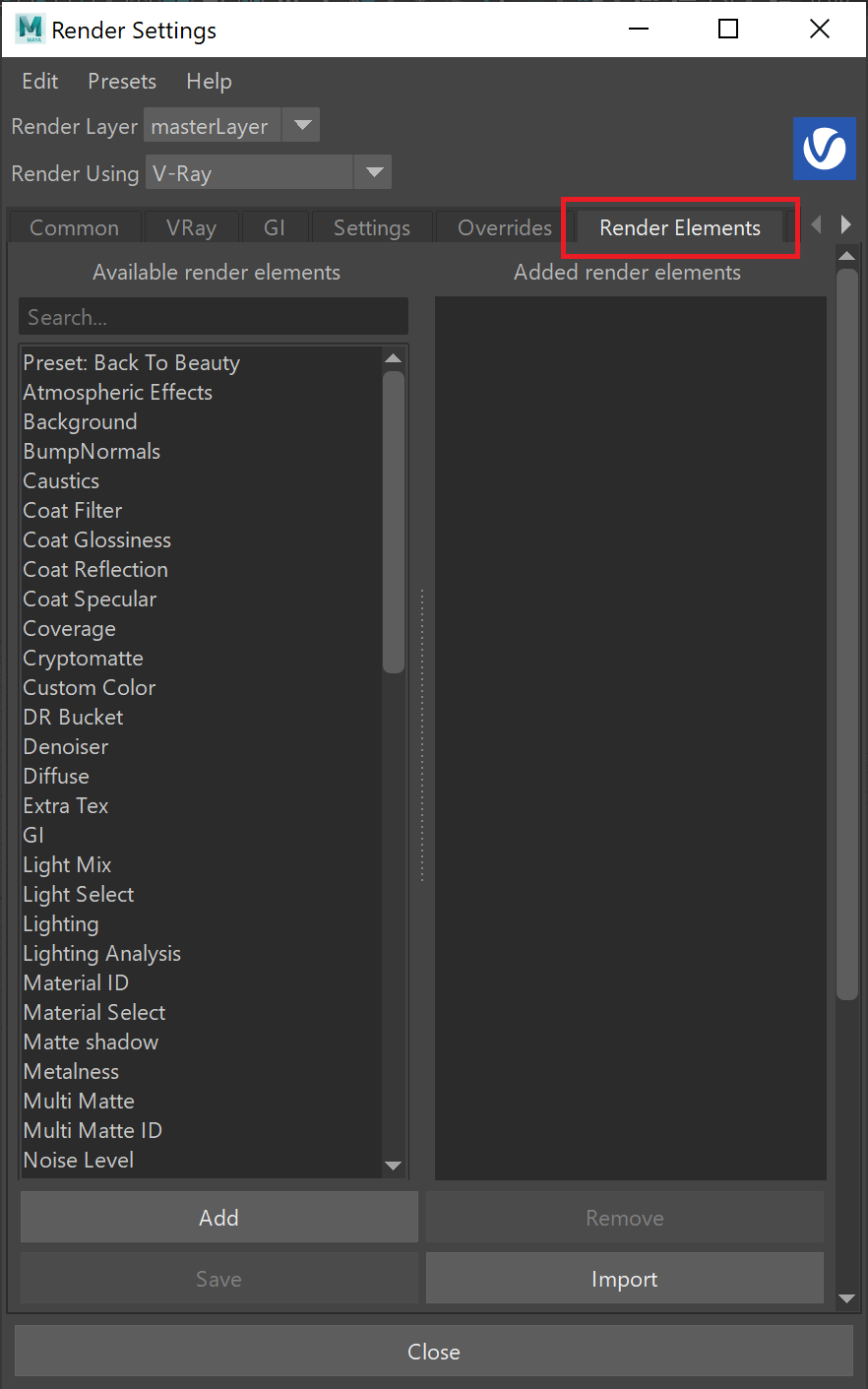This page gives some basic details about the Raw Shadow render element and explains how it is used.
Overview
The Raw Shadow Render Element stores information about cast shadows calculated from the lighting in the scene. It is a "reverse" image in the sense that white areas indicate shadows while black areas indicate no shadow.
Attributes
The parameters for this render element appear in the Attribute Editor under Extra V-Ray Attributes.
Enabled – When enabled, the render element appears in the V-Ray Virtual Frame Buffer.
Deep output – Specifies whether to include this render element in deep images.
Filename suffix – The text added to the end of the rendered file, when saved as a separate file (e.g. myrender.rawShadow.vrimg).
Apply color mapping – Applies the color mapping options specified in the Color Management rollout of the VRay tab in the Render Settings window to this render element. This option is enabled by default.
Denoise – Enables the render element's denoising, provided the Denoiser render element is present.
Common Uses
The Raw Shadows Render Element is useful for changing the appearance of shadowed areas after rendering in a compositing or image editing application. Below is an example of its use, where the Raw Shadows are added (plus) with the vrayRE_Raw_Light pass.
Raw Shadow Render Element
Original Beauty Composite
Shadows lightened by adding the Raw Shadow Render Element
Underlying Compositing Equation
vray_Raw_Shadow x vrayRE_Diffuse = vrayRE_Shadow
Notes
Shadows can be both added and subtracted at a composite level without rerendering using the Shadow Render Elements.
Shadows can be color corrected using the Shadow Render Elements.
- There is initial support for Raw Shadow render element on V-Ray GPU.







